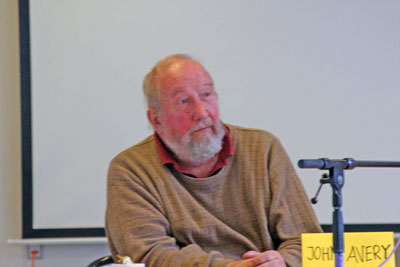Geological Extinction Events And Runaway Climate Change
By John Scales Avery
27 April, 2014
Countercurrents.org
The melting of Arctic sea ice is taking place far more rapidly than was predicted by IPCC reports. David Wasdell, Director of the Apollo-Gaia Project, points out that the observed melting has been so rapid that within less than five years, the Arctic will be free of sea ice at the end of each summer. It will, of course continue to refreeze during the winters, but the thickness and extent of the winter ice will diminish.
It has also been observed that both the Greenland ice cap and the Antarctic ice shelfs are melting much more rapidly than was predicted by the IPCC. Complete melting of both the Greenland ice cap and the Antarctic sea ice would raise ocean levels by 14 meters. It is hard to predict how fast this will take place, but certainly within 1-3 centuries.
Most worrying, however, is the threat that without an all-out effort by both developed and developing nations to immediately curb the release of greenhouse gases, climate change will reach a tipping point where feed-back loops will have taken over, and where it will then be beyond the power of human action to prevent exponentially accelerating warming.
By far the most dangerous of these feedback loops involves methane hydrates or clathrates. When organic matter is carried into the oceans by rivers, it decays to form methane. The methane then combines with water to form hydrate crystals, which are stable at the temperatures and pressures which currently exist on ocean floors. However, if the temperature rises, the crystals become unstable, and methane gas bubbles up to the surface. Methane is a greenhouse gas which is 70 times as potent as CO2.
The worrying thing about the methane hydrate deposits on ocean floors is the enormous amount of carbon involved: roughly 10,000 gigatons. To put this huge amount into perspective, we can remember that the total amount of carbon in world CO2 emissions since 1751 has only been 337 gigatons.
A runaway, exponentially increasing, feedback loop involving methane hydrates could lead to one of the great geological extinction events that have periodically wiped out most of the animals and plants then living. This must be avoided at all costs.
Here are links to some videos which discuss these dangers:
https://www.youtube.com/watch?v=MVwmi7HCmSI
https://www.youtube.com/watch?v=AjZaFjXfLec
https://www.youtube.com/watch?v=W_aMbM20mbg
https://www.youtube.com/watch?v=m6pFDu7lLV4
https://www.youtube.com/watch?v=MVwmi7HCmSI
The worst consequences of runaway climate change will not occur within our own lifetimes. However, we have a duty to all future human generations, and to the plants and animals with which we share our existence, to give them a future world in which they can survive.
 John Avery received a B.Sc. in theoretical physics from MIT and an M.Sc. from the University of Chicago. He later studied theoretical chemistry at the University of London, and was awarded a Ph.D. there in 1965. He is now Lektor Emeritus, Associate Professor, at the Department of Chemistry, University of Copenhagen. Fellowships, memberships in societies: Since 1990 he has been the Contact Person in Denmark for Pugwash Conferences on Science and World Affairs. In 1995, this group received the Nobel Peace Prize for their efforts. He was the Member of the Danish Peace Commission of 1998. Technical Advisor, World Health Organization, Regional Office for Europe (1988- 1997). Chairman of the Danish Peace Academy, April 2004. http://www.fredsakademiet.dk/ordbog/aord/a220.htm. He can be reached at [email protected]
John Avery received a B.Sc. in theoretical physics from MIT and an M.Sc. from the University of Chicago. He later studied theoretical chemistry at the University of London, and was awarded a Ph.D. there in 1965. He is now Lektor Emeritus, Associate Professor, at the Department of Chemistry, University of Copenhagen. Fellowships, memberships in societies: Since 1990 he has been the Contact Person in Denmark for Pugwash Conferences on Science and World Affairs. In 1995, this group received the Nobel Peace Prize for their efforts. He was the Member of the Danish Peace Commission of 1998. Technical Advisor, World Health Organization, Regional Office for Europe (1988- 1997). Chairman of the Danish Peace Academy, April 2004. http://www.fredsakademiet.dk/ordbog/aord/a220.htm. He can be reached at [email protected]
Comments are moderated
